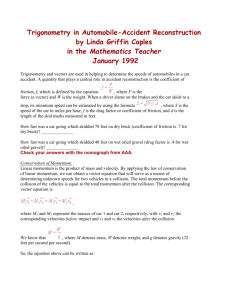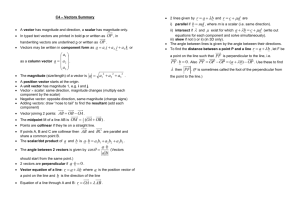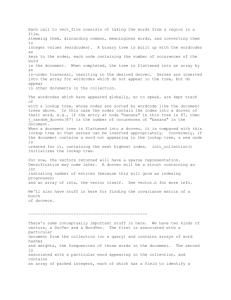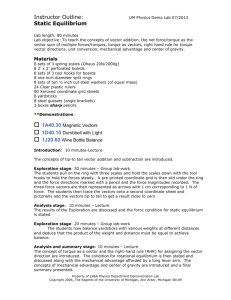Rolling motion, angular momentum vector and cross products
advertisement
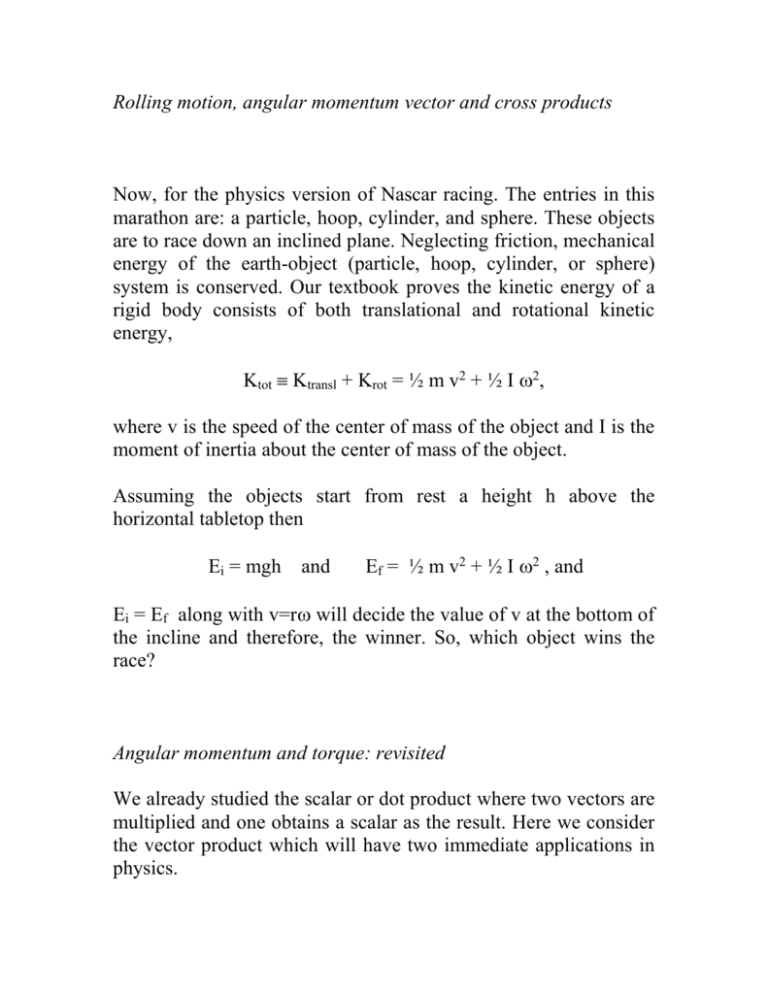
Rolling motion, angular momentum vector and cross products Now, for the physics version of Nascar racing. The entries in this marathon are: a particle, hoop, cylinder, and sphere. These objects are to race down an inclined plane. Neglecting friction, mechanical energy of the earth-object (particle, hoop, cylinder, or sphere) system is conserved. Our textbook proves the kinetic energy of a rigid body consists of both translational and rotational kinetic energy, Ktot Ktransl + Krot = ½ m v2 + ½ I 2, where v is the speed of the center of mass of the object and I is the moment of inertia about the center of mass of the object. Assuming the objects start from rest a height h above the horizontal tabletop then Ei = mgh and Ef = ½ m v2 + ½ I 2 , and Ei = Ef along with v=r will decide the value of v at the bottom of the incline and therefore, the winner. So, which object wins the race? Angular momentum and torque: revisited We already studied the scalar or dot product where two vectors are multiplied and one obtains a scalar as the result. Here we consider the vector product which will have two immediate applications in physics. It turns out the most general definitions of angular momentum of a particle and torque by a force are of the forms, L r x p and r x F. The r is the vector from the origin of coordinates to the particle or point of application of the force, p is the linear momentum of the particle with position vector r and F is the applied force at position r. To understand this new terminology we turn to … On the Vector or Cross Product The cross product is a way of multiplying two vectors to obtain a vector as the outcome, the product. We need two things to uniquely define a vector: its magnitude and direction. The magnitude is easy, |C| |A x B| |A| |B| sin, where is the smallest angle between A and B. Two special cases are especially significant. If the two vectors, A and B, are along the same direction then is 0 degrees and their cross product vanishes. If A and B are at right angles (i.e., is 90 degrees) then their cross product has its maximum magnitude. Turning now to the direction of the cross product (no pun intended). The vector C A x B is defined to be perpendicular to the plane formed by the two vectors A and B. The last ounce of ambiguity is removed by stating that the direction of C is given by the right-handed screw rule. I can’t tell you about the right screw rule in such an open forum, this will have to await our meeting tomorrow in class. The cross product can also be found by representing the vectors A and B in terms of the unit vectors i, j, and k. One then multiplies the vectors using ordinary algebra, but making sure the order of the factors doesn’t change since the vector product is anticommutative. E.g. (6i +12j) x (3i + 5j) = 6x3(0) + 6x5k + 12x3(-k) + 12x5(0) = (30-36)k = – 6 k The cross product may also be expressed as a determinant. Examples[in class]



